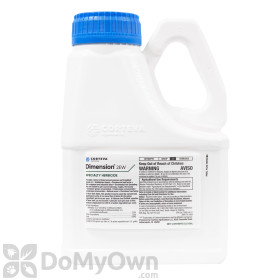Dallisgrass Preventers & Lawn Maintenance
Apply A Dallisgrass Preventer
(Pre-Emergent Herbicide)
Pre-emergent weed treatments can prevent dallisgrass from growing, suppressing the plant before it grows above ground. To be effective, the dallisgrass preventer you select must be applied early enough to stop the dallisgrass seeds from germinating and growing.
- Pre-emergent herbicides must be applied before seeds begin to germinate, which is generally when the soil temperatures reach 55-60 degrees in your area. This will vary depending on where you live. Contact your local extension office for some tips on when to apply pre-emergents in your area. For dallisgrass prevention you will usually be applying in the spring--between February and April.
- Choose a product labeled for dallisgrass control.
- Read the label and follow all instructions carefully. Many of these products must be watered in and may have other recommendations for maximum effectiveness.
Products needed for Step 1
Proper Lawn Maintenance
- Proper mowing: Try to maintain a uniform height across your lawn without cutting too low anywhere. It's important to try and remove only 1/3 of your grass at each mow while maintaining the desired height. This may mean you have to mow more often to maintain the target height. For more details on some popular grass types and how to keep them healthy, check out our Grass Care Guides for Bermuda Grass, St. Augustine Grass, and Fescue Grass.
- Proper irrigation: Watering your lawn less frequently but for longer periods of time is a more effective way for your grass to get moisture and allows roots to grow deeply.
- Proper fertilization: Fertilize your lawn as needed, following the lawn care schedule for your cool or warm season lawn. Avoid under or over fertilization.
- Timely Aeration: Proper aeration of a grassy area can reduce moisture levels making the soil a less attractive host for dallisgrass. Avoid heavy aeration in the spring, however--the resulting small holes in the surface are perfect spots for germinating dallisgrass seeds to find a home.







